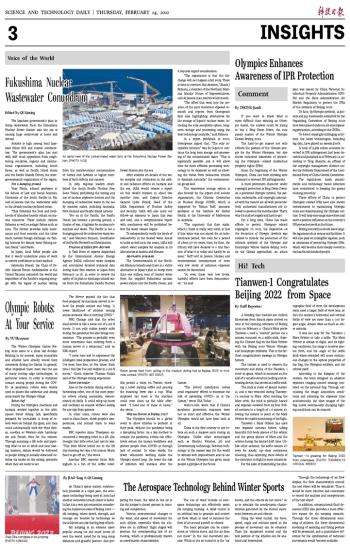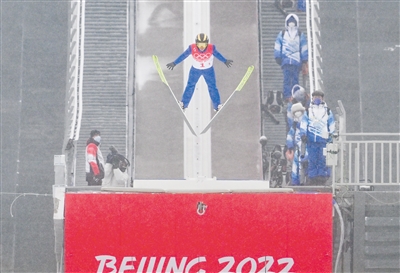
 |
| Zhao Zihe competes in ski jumping. (PHOTO: XINHUA) |
As China's space station construction proceeds at a rapid pace, the aerospace technology being used in 2022 has another connection much closer to home. In fact it is a very apt connection considering the massive success of Beijing 2022 — ski jumping, where speed, strength and courage are boosted by technology so that athletes can take that big leap of faith.
Ski jumping is an extreme sport popular among ice and snow lovers all over the world, noted for its long jump distances and graceful posture. And preparing for those, the wind in the air is the ski jumper's closest partner in training and competition.
Various environmental changes to the wind, and speed of movement for each athlete, especially when the athletes are in different flight stages will produce the corresponding law of air moving, which is professionally known as aerodynamic characteristics.
The use of wind tunnels in aerospace technology can effectively assist ski jumping training. A wind tunnel is an artificial way to generate and control air flow, which is used to simulate the flow of air around aircraft or objects.
The basic principle can be understood as "objects move, and the air does not move" in the real movement process. While in the air tunnel it is the "air moves, and the objects do not move," so as to simulate the aerodynamic characteristics generated by the mutual movement between air and objects.
Using the wind tunnel, the force, speed, angle and rotation speed in the process of movement can be obtained. Then the equipment control and the best posture of the athletes can be analyzed and determined.
Through the technology of air flow display, the flow characteristics around the test object will be visualized. Thus it would be more intuitive and convenient to record the analysis and interpretation of the test object.
In addition, computational fluid dynamics (CFD) also provides a more effective means for ski jumping research. Through the three-dimensional scanning of athletes, the three-dimensional modeling of assisting and flying posture will be presented, and a quantitative reference for the optimization of technical movements would become available.


 Next
Next




